
Bitcoin BTC begins a new week with traders guessing at its best levels in 18 months – what comes next?BTC price movement has remained upward after peaking above $38,000 last week, but a challenging “micro-range” has kept bulls and bears at odds.
The crucial short-term concern for market players is whether a deeper correction will occur or whether a journey above $40,000 will leave sceptics behind.
There are several possible catalysts for trend emergence for Bitcoin over the coming several days, while there are rising signals that the market is poised for a boost.Volatility is expected to arrive later in the month, but a slew of macroeconomic issues have the potential to cause some unexpected price activity.
The monthly closure approaches, with the price of Bitcoin rising by less than 10%
This week’s crucial calendar event for day traders is the monthly close, with Bitcoin at a crossroads.
As previously reported by Cointelegraph, unproven liquidity levels to the downside and the allure of $40,000 to the upside — both surrounded by resistance — combine for a tenacious daily trading range.
Neither bulls nor bears have been able to remove BTC/USD from an increasingly tight corridor, and new higher highs on daily timescales have been few and fleeting.
A timely dip saw bids begin to be met at the previous weekly close, with Bitcoin plunging to lows of $37,100 before rebounding, according to data from Cointelegraph Markets Pro and TradingView.
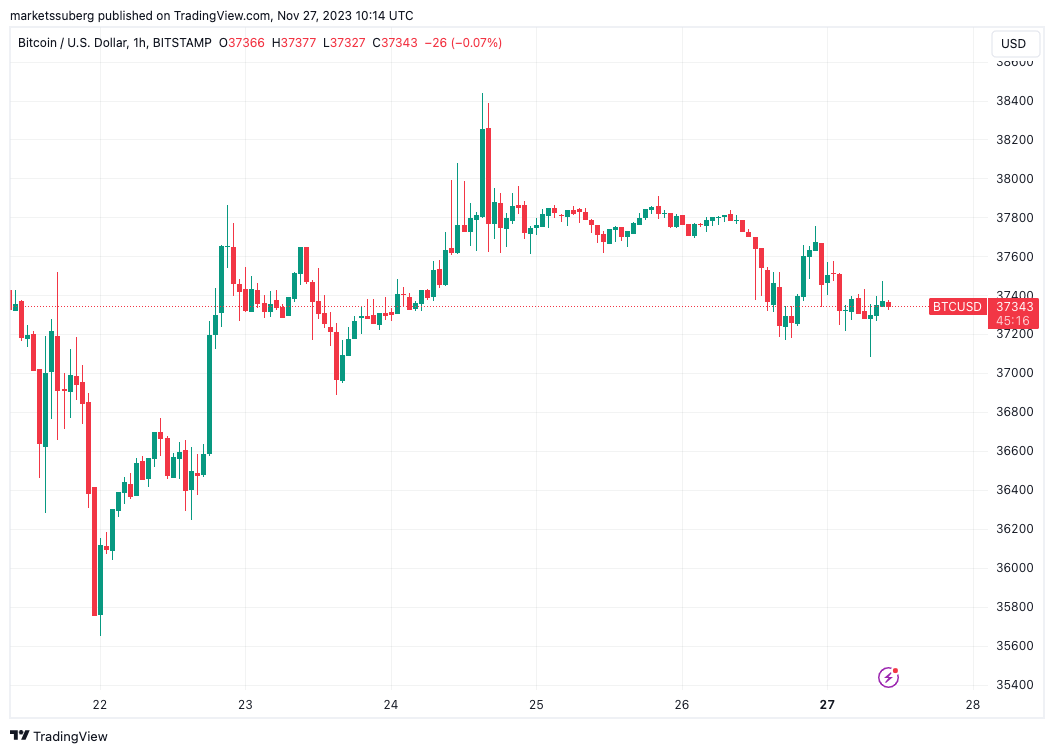
It is now time for bid momentum to resurface, according to famous trader Skew.
“Spot takers led the bounce & eventually perp takers were the forced bid; mostly shorts forced out of the market,” he stated in a dedicated analysis on X (previously Twitter).
“Now as we go into EU session & US session important to see if spot bids or not.”
Skew also mentioned liquidity blocks both above and below the market price, with $37,000 and $38,000 as critical levels to watch.
“Lots of bid liquidity below $37K, so if spot takers continue to be net sellers, this would be the momentum required to fill those limit bids below,” he said of the order book on Binance, the world’s largest exchange.
“As for ask liquidity aka supply, that remains between $38K – $40K area ~ important area for higher.”
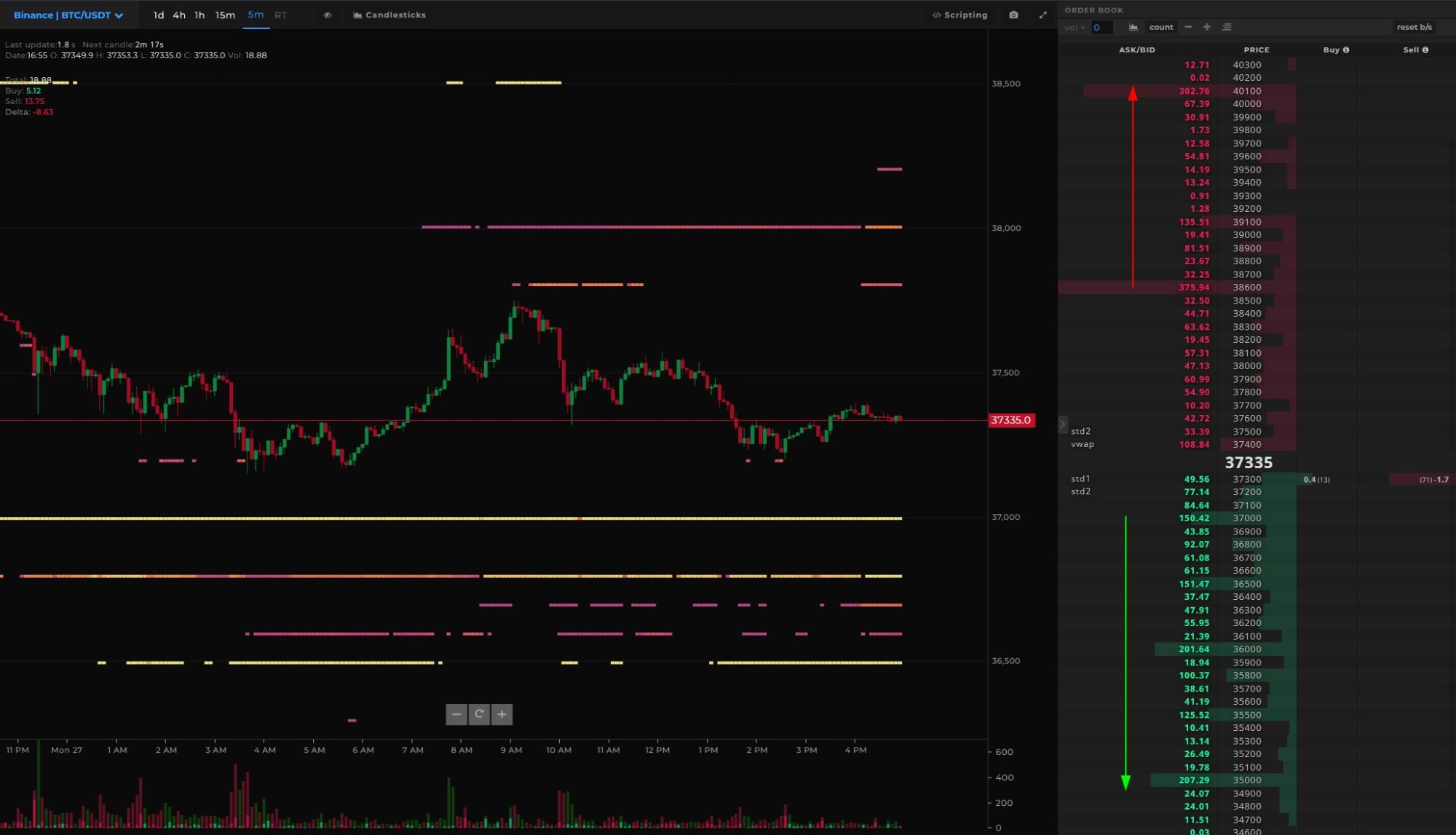
With the monthly closing just days away, Bitcoin is already up 7.8% month to date, putting November 2023 in line with previous years.
According to CoinGlass data, November is often characterised by more greater BTC price swings, which can be both up and down.
Meanwhile, the fourth quarter has seen growth of about 40%.
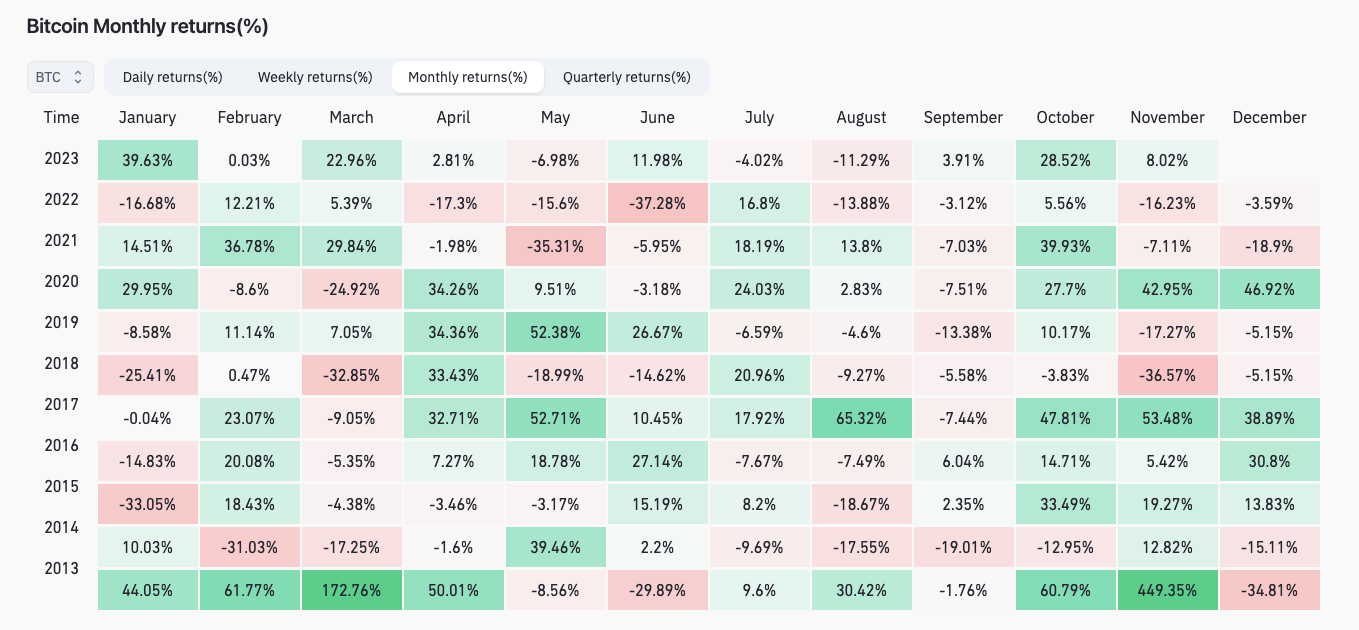
Key Fed inflation indicators serve as macro triggers
As November comes to a conclusion, Bitcoin traders should expect a traditional macro week with volatility triggers to match.
The Federal Reserve of the United States will get some significant inflation statistics in the coming days, which will be used to make an interest rate policy decision next month.
Following statements from top Fed officials throughout the week, Fed Chair Jerome Powell will speak on December 1.
The most important data releases for markets will most likely be the Q3 GDP and Personal Consumption Expenditures (PCE) prints for October, which will be released on November 29 and 30, respectively.
Previously, US macro data showed that inflation was slowing faster than markets expected, resulting in favourable reevaluations of risk assets.
“We have a full trading week ahead of us, and volatility is here to stay,” says a financial commentary resource. On X, the Kobeissi Letter is summarised.
According to CME Group’s FedWatch Tool, the probability of the Fed keeping rates at present levels are nearly unanimous at 99.5%.
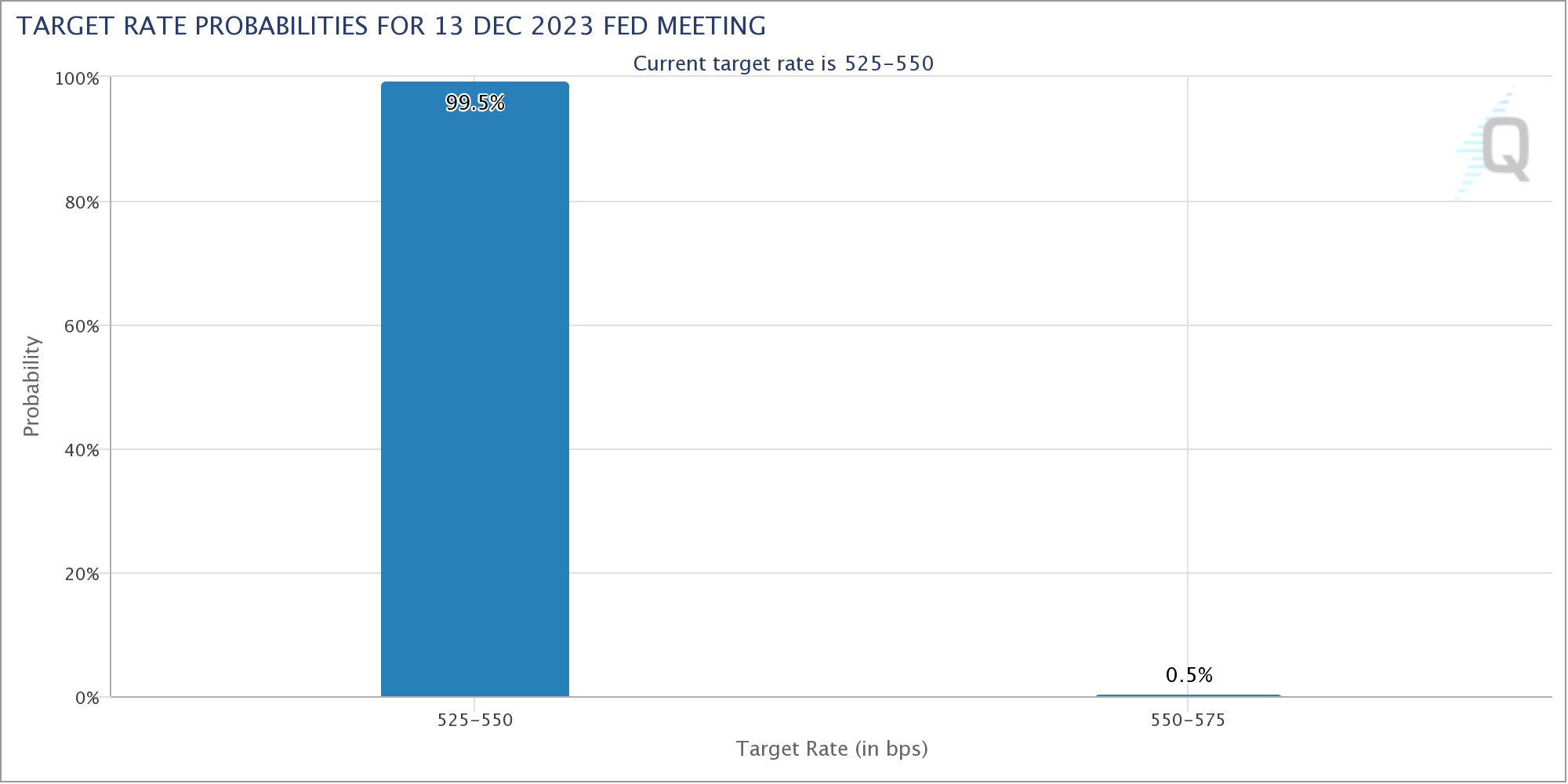
GBTC is aiming for BTC price parity
While Bitcoin is still waiting for US authorities to approve the country’s first spot price exchange-traded fund (ETF), markets indicate that sentiment is improving.
This is most evident in the Grayscale Bitcoin Trust (GBTC), the largest Bitcoin institutional investment vehicle.
GBTC, which is about to be transformed to a spot ETF, is rapidly reaching parity with its underlying asset pair, BTC/USD.
According to CoinGlass statistics, the GBTC share price had a paltry 8% discount to net asset value, or NAV, as of Nov. 24.
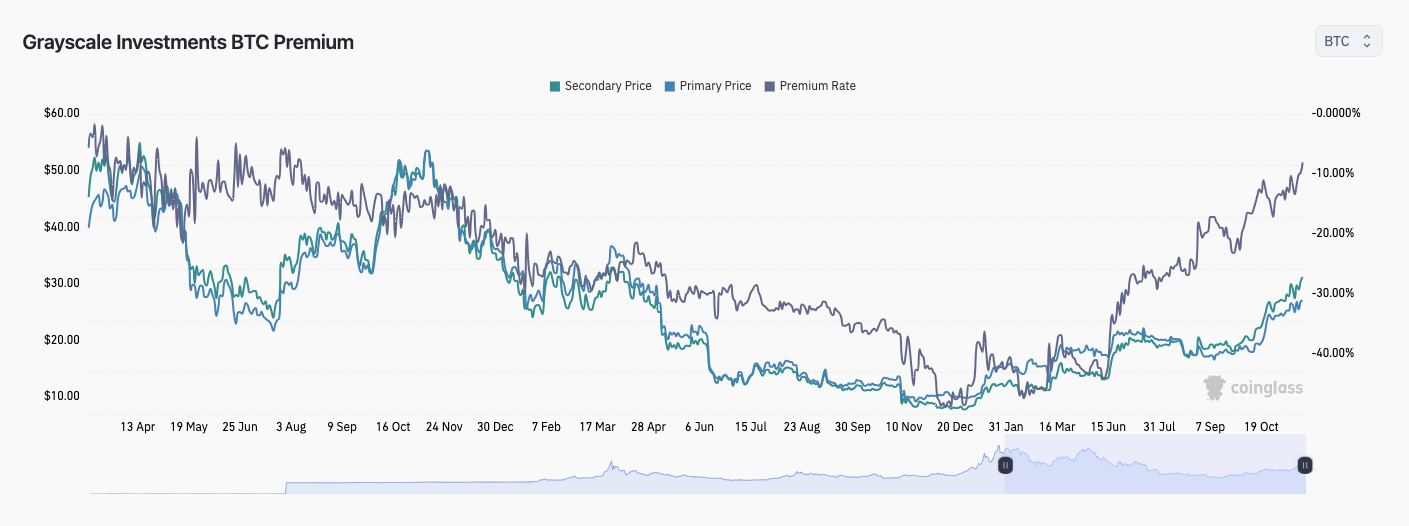
The fund’s revival has emerged as a significant narrative in both the upcoming successful ETF approval and the rise of actual mass institutional interest in Bitcoin for the first time.
“It appears that the market is really expecting this ETF approval soon,” William Clemente, co-founder of crypto analysis firm Reflexivity, said in response to the weekend data.
In terms of the watershed moment, however, the dates of significance now all fall after the new year.
Trading company QCP Capital suggested in its recent market report delivered to Telegram channel subscribers that Jan. 3, 2024, would be a timely approval date, coinciding with the 15th anniversary of the Bitcoin genesis block.
Following that, Jan. 10 is an interim deadline for the first-in-line ETF, ARK Invest, because “the final deadline for ARK’s application is included in the first approval batch.”
“And in the case ARK is rejected and the rest postponed yet again, the true make-or-break deadline is 15 March 2024 — where Blackrock and the main bunch of candidates face their own final deadline,” it went on to say.
Bitcoin’s hash rate has surpassed the 500 exahash threshold
Bitcoin miners are devoting unprecedented processing capacity to the network in preparation of the planned block subsidy reduction in April 2024.
The hash rate – the projected measure of this deployment — is presently at its greatest level ever, surpassing 500 exahashes per second for the first time this month.
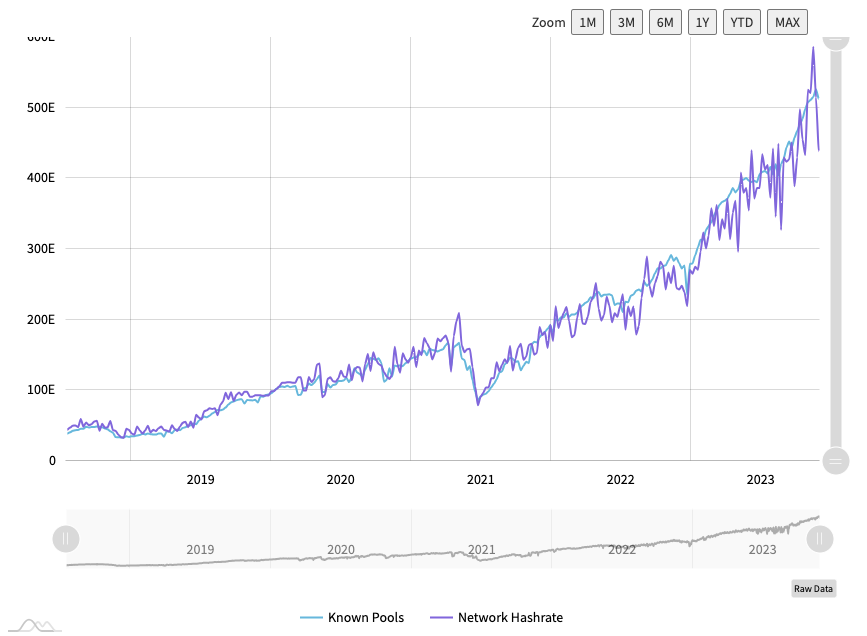
The achievement not only signifies a psychological milestone, but it also demonstrates miners’ confidence in future profitability — even while BTC price performance remains 50% behind its own top.
At the same time, data from on-chain analytics platform CryptoQuant shows that outflows from known miner wallets to exchanges are at their lowest in seven years.
“The flow of movement from Bitcoin miner wallets to exchange wallets ultimately represents these entities’ activity in the open market,” contributing analyst Caue Oliveira stated in one of Quicktake market reports.
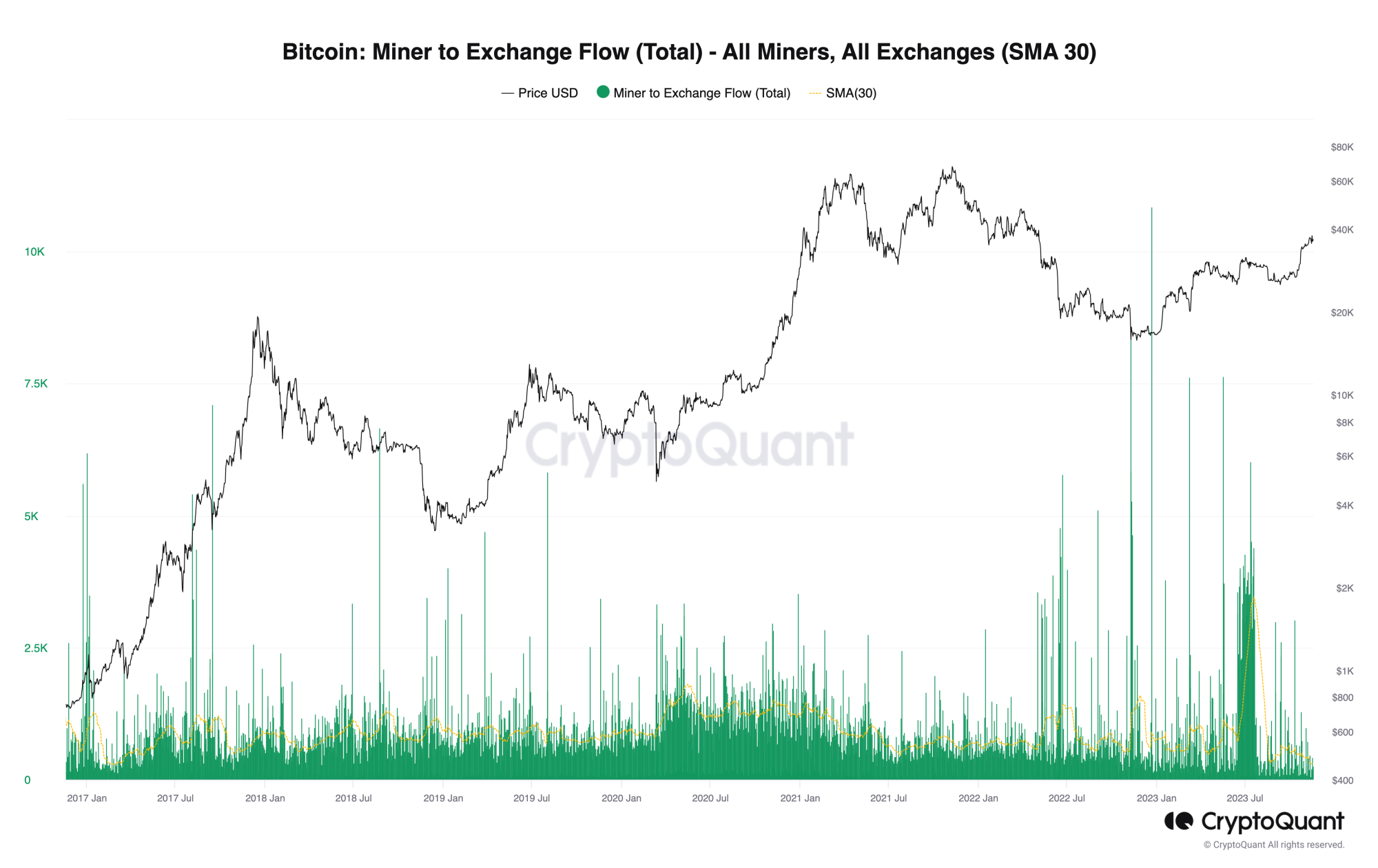
Miners are usually selling part of their holdings, according to Oliveira, but the current monthly average of 90 BTC is the lowest since 2017.
Bitcoin exchange balances have resumed their downward trend
After a month of upheaval caused by withdrawal freezes and legal action against several of the largest cryptocurrency exchanges, BTC holdings are once again going downward.
Related: Bitcoin reaching $1 million with ETF approval? Bitcoin price forecasts vary greatly.
In keeping with the wider pattern that has been in place for five years, BTC exchange stocks are declining.
As of Nov. 26, the aggregate holdings of the main exchanges were 2.332 million BTC, according to the most recent statistics from on-chain analytics firm Glassnode.
Except for recent lows in October, this is the fewest number of BTC accessible since April 2018. The total reached 3.321 million BTC in March 2020, soon after the COVID-19 cross-market crisis.
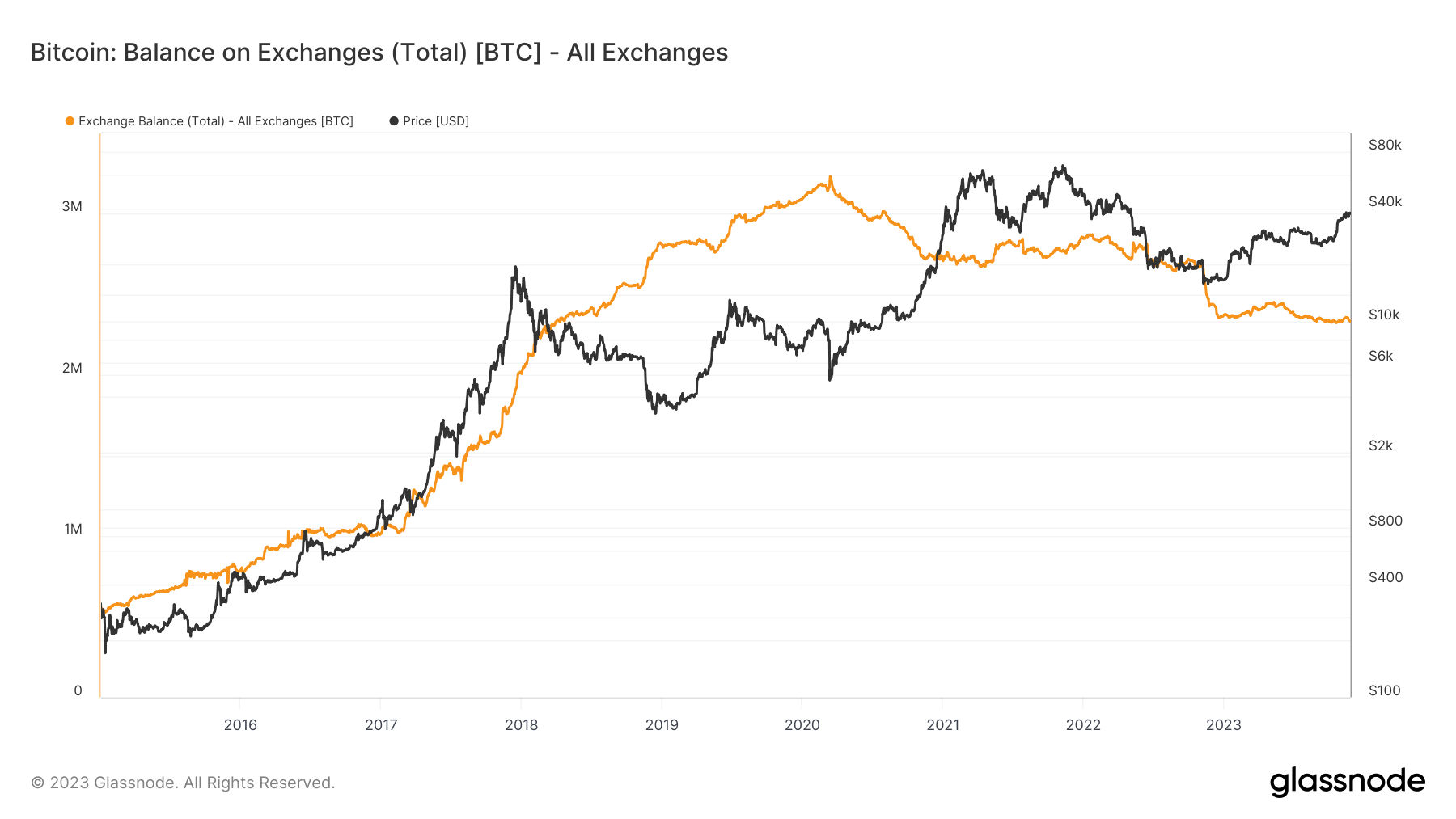
The scenario became more convoluted in November as a result of traders’ responses to Binance getting a record $4.3 billion US punishment, as well as Poloniex and HTX suspending withdrawals entirely following a hack.
